Good morning, and welcome back to another week here in the Mirror Gallery on Hipsters of the Coast. We’ve still got some time before the art from Kamigawa: Neon Dynasty is out and about, so this week I’m crossing another one of my esoteric article ideas off my list. Last year, I listened to a podcast episode of Malcom Gladwell’s Revisionist History entitled Malcolm Gladwell’s 12 Rules for Life. I thought it might be fun to do something similar but through the lens of art, gleaned from my experience over the last few years of traversing the worlds of original Magic art and the larger fantasy genre.
These are by no means meant to be serious, end-all-be-all hard and fast rules that must be followed, but rather thoughts that might enhance your experience with artwork, in whatever capacity you seek to interact with it. Whether you’re looking to collect original, traditional work of your own, appreciate art from afar, or a little bit of both, take these as some food for thought as you go on your way.
These are my 12 Rules for the Art Life.
1. Buy what you love.

Basic Land Panorama #4 by Donato Giancola. Traditional.
I’ve spoken about this since my very first article on Hipsters of the Coast, but as a collector, making sure you focus on what you love is the absolute best way to make sure art is still a source of joy. Like I said those few years ago, “buy what you love” doesn’t mean passing up good deals, or adding something to your wall temporarily, or not selling something to make room for something else. It simply means that collecting with your heart and head working in tandem is where art-vana lies.
When you buy work you love, and it goes on your wall, and you look at it every day, a completely unique dynamic is born, much different from art stacked in a flat file or warehouse as an investment. And while this isn’t wrong per se, one strategy is certainly more enjoyable, and by far opens more doors of discovery.
2. Find your favorite part, and start there.
Pivoting 180 degrees, there is going to be art you find that you don’t like, whether it’s not to your taste or there’s an element you find visually displeasing. There is absolutely nothing wrong with this; you can’t like everything, and I’d probably raise an eyebrow if someone said they did. But this Rule comes with a challenge.
The next time you see an artwork you don’t like, ask yourself: “If I liked this artwork, what would I like about it?” Maybe the palette isn’t something you enjoy, but you can appreciate the strong figurative work. Maybe you find the composition jarring, but the colors of the sky really evoke emotion. Maybe there are technical flaws, from something gone wrong in the medium to a looming deadline that just didn’t allow time to be fixed, but there’s still 95% of polished work left to enjoy. It’s very much a glass-half-full approach, but whether it’s color or composition or figure or form, find your favorite part and explore for just a minute more. You may find that you surprise yourself, I know I have.
3. Nostalgia is one hell of a drug.
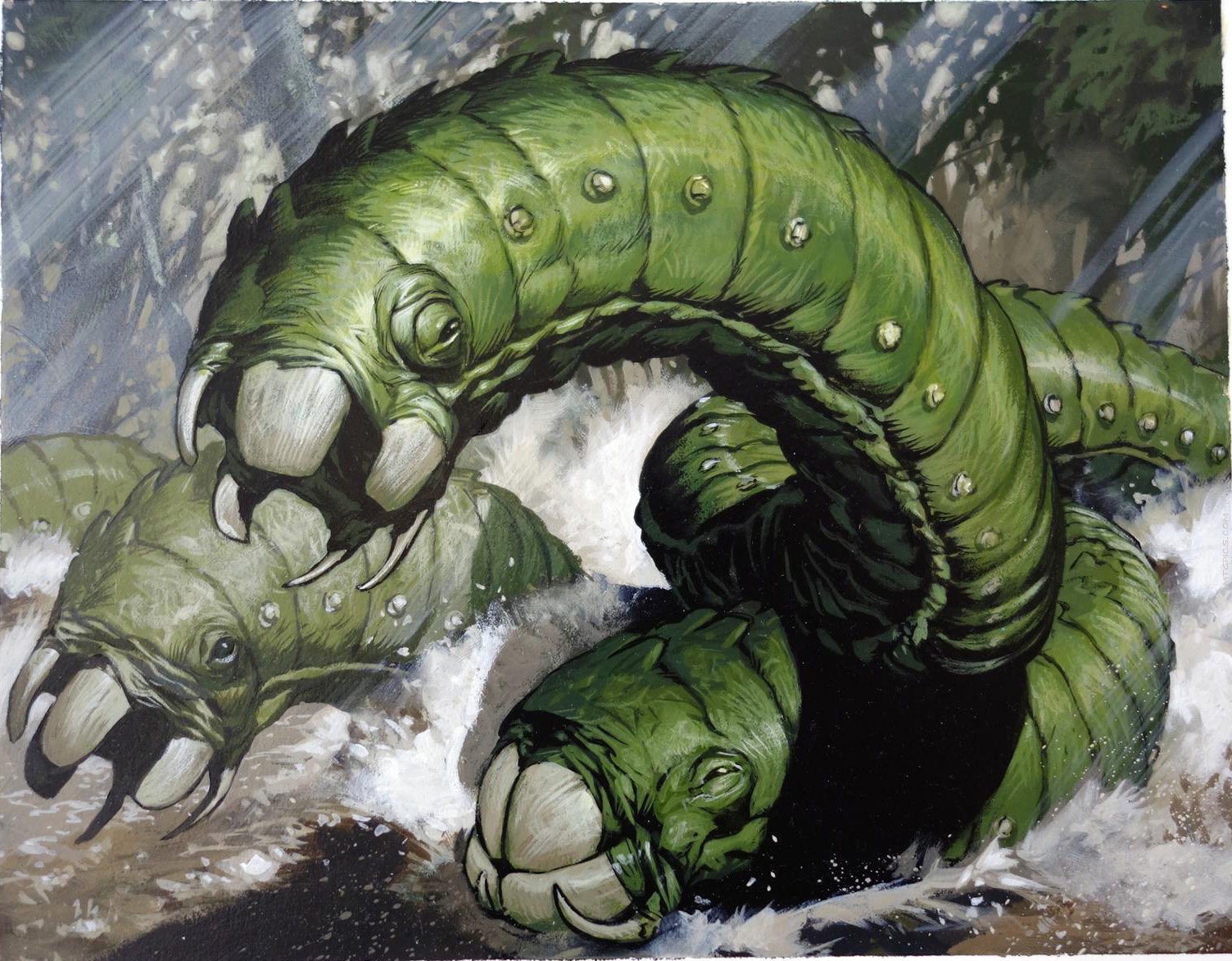
Crush of Wurms by Christopher Moeller. Traditional.
There is perhaps no greater force to the collecting and creative populace than that of nostalgia. It fuels both ends of the art world, as artists often draw reference and inspiration from those thoughts and memories that are most poignant, and collectors and connoisseurs resonate with those emotions that were dredged from their past and realized anew.
For myself and when it comes to Magic art, there are several markers of nostalgia that absolutely influence my collecting and overall interest. I started playing during the Onslaught block, and well into Mirrodin, with a heavy helping of Odyssey on the side. I remember the cards, what they do, and the artwork of many pieces long forgotten, and only because I spent so many good times at a kitchen table with friends pouring over our new obsession. The same is true for work I’ve collected with strangers-made-friends, and thinking back on our first meetings and the blooming relationships that have come from it. Art is ultimately about relationships, and nostalgia is very often that genesis. It’s where it begins, what keeps it going, and what makes it exciting in the future.
4. See it in person.
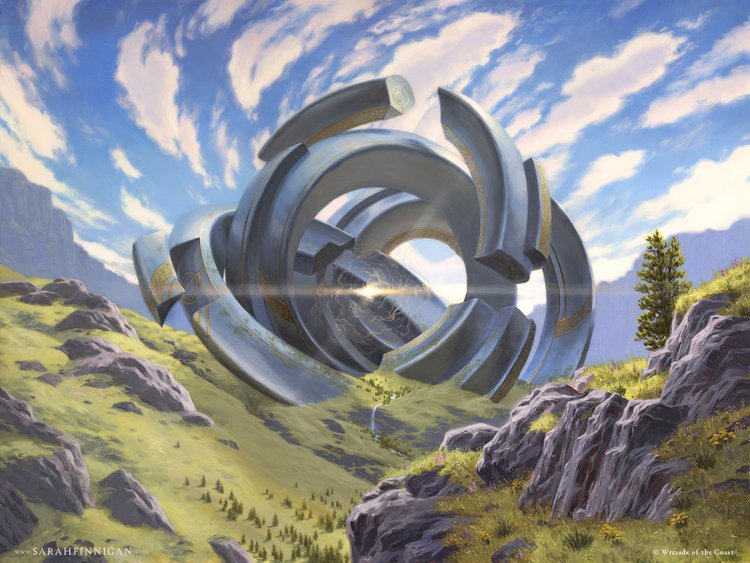
“Dominaria United” by Sarah Finnigan. Traditional.
This has been perhaps the biggest challenge of the last two years in a post-COVID world, but seeing a traditional work of art in person is so much different than looking at it on a screen. There are paintings that I’ve gotten to see in person this year that I literally cannot stop thinking about. They cross my thoughts on a near weekly basis, and that sort of micro-phenomenon can only be explained by the visceral impact of being witness to art in person. I look forward to IX and the rest of the conventions in 2022 to be able to see even more art after the drought of 2020 and most of 2021, and cannot wait for the new earworm pieces I’ll discover.
5. You can sell it later, but you may never be able to buy it again.
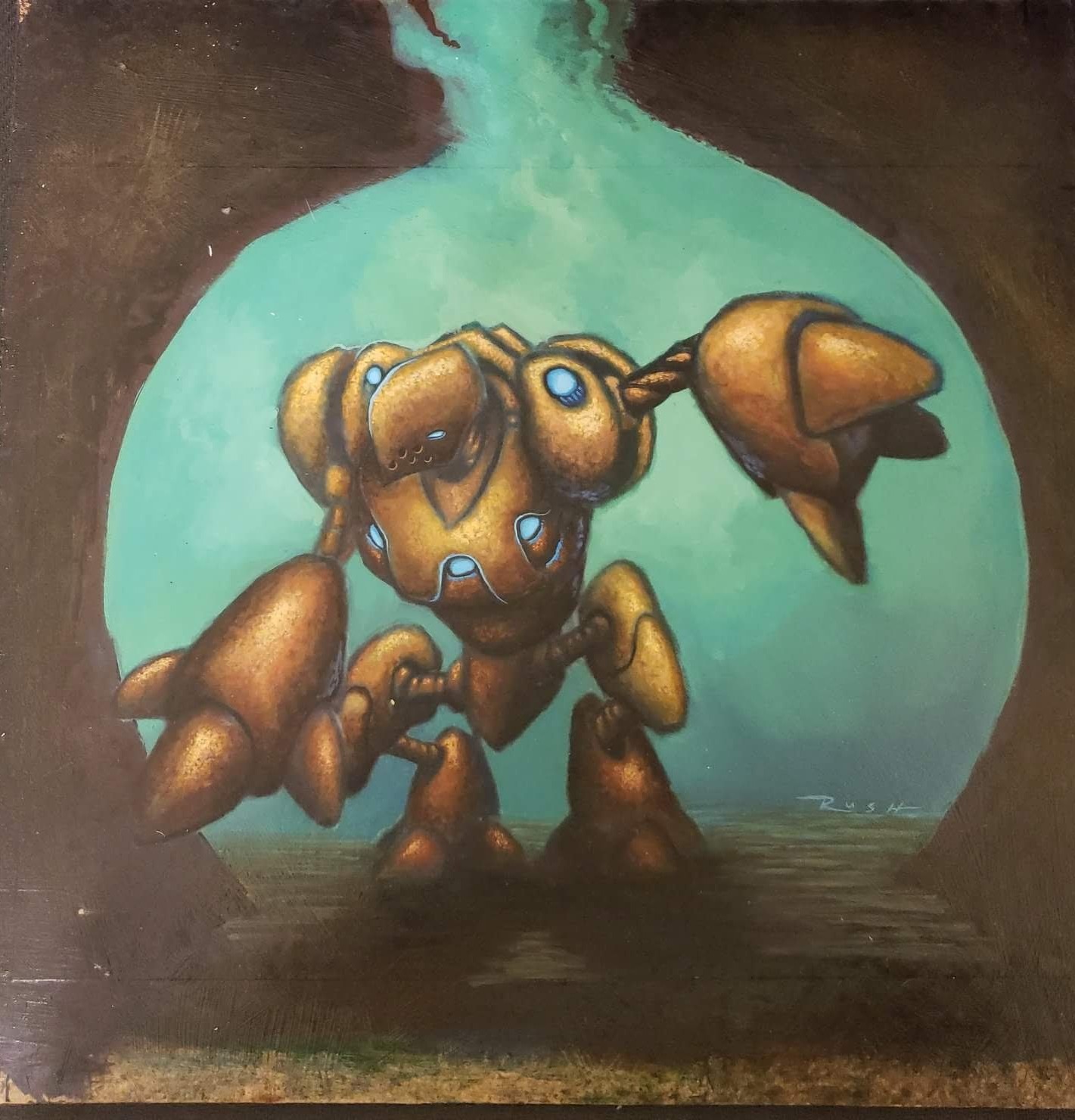
Myr Quadropod by Christopher Rush. Traditional.
I remember standing in my office when art guru Pat Wilshire told me this on the phone, while we were discussing the then yet to be named Whimsy, Wonder & War exhibition that opened at IX in 2019, and he’s absolutely right. This very much goes hand-in-hand with “buy what you love.” You must not forget this fact: just because something is available today, or has been for a long time, does not mean it will be there for you forever.
Heed Pat’s and now my advice: if you love it (important), it’s a reasonable deal (also important) and can afford it (even more important), then buy it. If you ever fall out of love, you can find it a new home. And if you’re in a pinch, it will always have value. But for many artworks, once they’re gone, they’re gone for a generation, and no one likes a case of the feel-bads.
It does also help to have some art-stigators to help nudge the hand of indecision. I have a few of my own, and they know who they are. I wouldn’t have bought several of the paintings I have without them, and for that I’m very thankful. Keep them close.
6. Surround yourself with different perspectives.
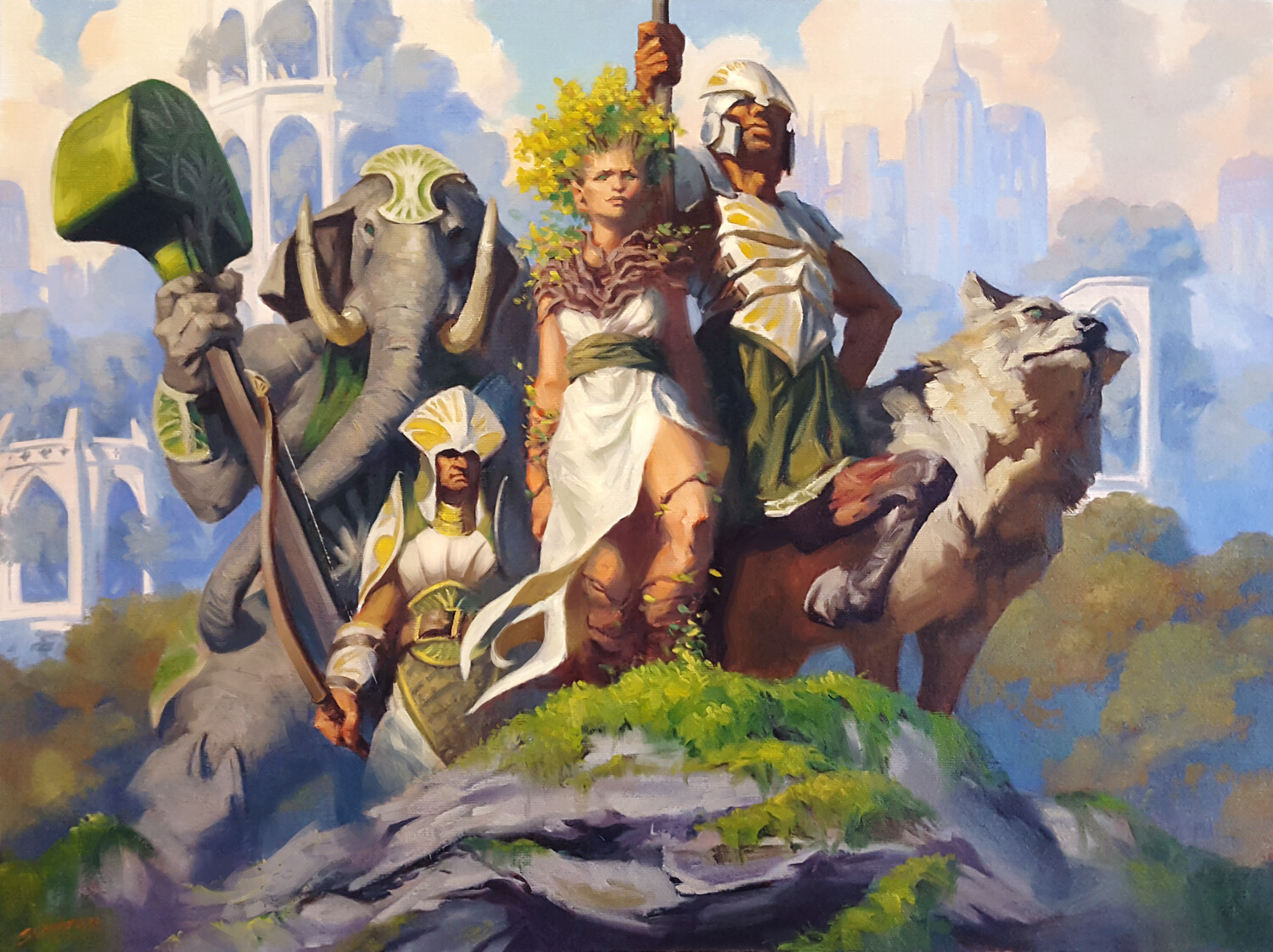
Camaraderie by Sidharth Chaturvedi. Traditional.
We are beings of Constructivism. Our past experiences and current situation affect how we experience the world, and by that reasoning, art. We generate our own opinions and tastes, likes and dislikes, based off of everything we’ve experienced before. Everyone has had a different journey, which means everyone will experience art a little differently; when you can see a work through someone else’s eyes, it will only widen your understanding.
7. Kindness outweighs constructive criticism.
If you’ve spent any time on social media, you know the internet can be an absolute minefield when it comes to posting creative work, and that’s especially true for art. There are lots of armchair artists ready to pounce, or give unsolicited critical feedback, or in some cases, even try and correct an artist’s work to how they think it should have been done. If you see something a bit off, or something not to your taste, don’t worry. 99% of the time the artist already knows it, and doesn’t need to hear what they could have done differently.
Even when my articles take the form of art criticism, you will never see me offering unsolicited artistic advice, or spreading negative sentiment about something I’ve seen. I don’t do it, and I won’t do it. There is too much good artwork out there to spew opinion on the opposite. When something kind pops into your head, say it. Send a little note, or write a comment. It will make someone’s day.
It’s as simple as this: Put good out, get good back. And help other people. You can’t go wrong.
8. Look Back, Forward, Left & Right.
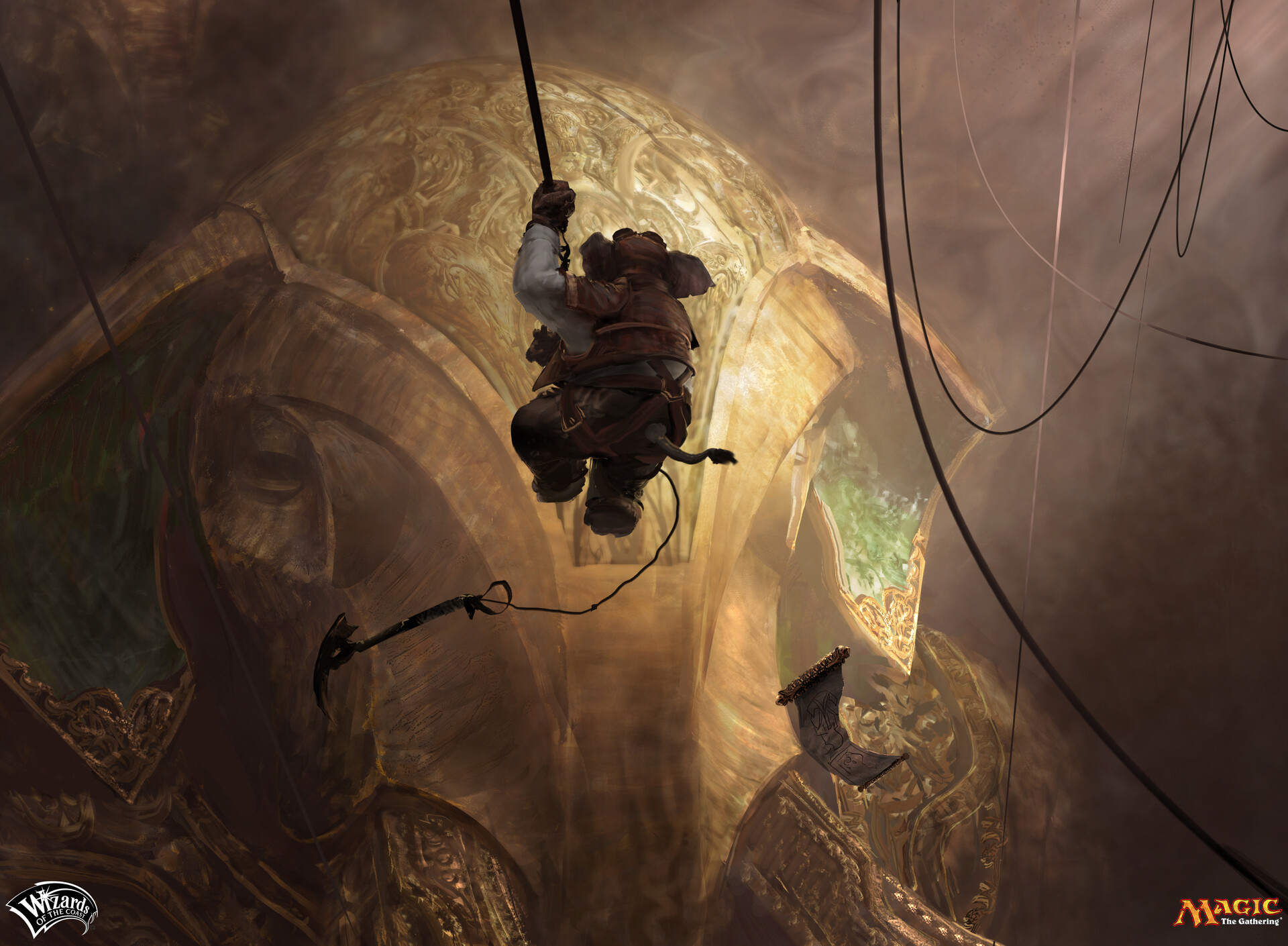
Thrilling Discovery by Campbell White. Digital.
This might sound a little funny at first—that’s what happens when I write very late at night or very early in the morning—but stick with me for a moment. When you’re looking at a piece of artwork, think about these directionals.
Look backwards: where did this artist draw inspiration, what came before this piece, and how did history influence both the work as you see it now, and those that came before it?
Look forward: what could this artwork mean for the future of the artist, or even the larger genre in which it exists?
Look left and right, and this is something so often missed: who are an artist’s contemporaries, the circles in which they work, and what are they doing? The schools that are born from artistic movements are hugely important to being able to understand what might be happening within a piece, and for what it might mean for the future.
Widen your gaze.
9. Be a little weird.
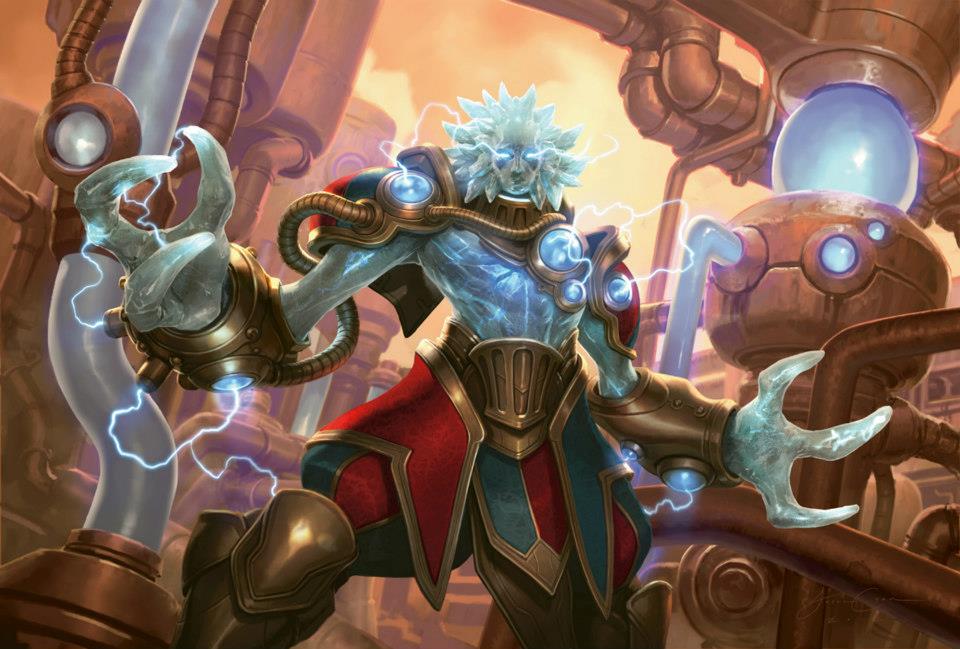
Melek, Izzet Paragon by Jason Chan. Digital.
The world is more fun when you let yourself be a little weird. Now I’m not saying make people uncomfortable, but let yourself fanboy or fangirl if the opportunity arises. Try something new, and be exuberant about it. If you’ve ever been to the IX Showcase, you know what I mean. Sometimes it’s watching Vorthos Mike do a touchdown dance during a game of Magic. Other times it’s seeing Magic Art Director Zack Stella and Julia Griffin switch clothes, a la Freaky Friday.
Point is, weirdness makes memories, and that’s what life is all about.
10. Take an artist to dinner.
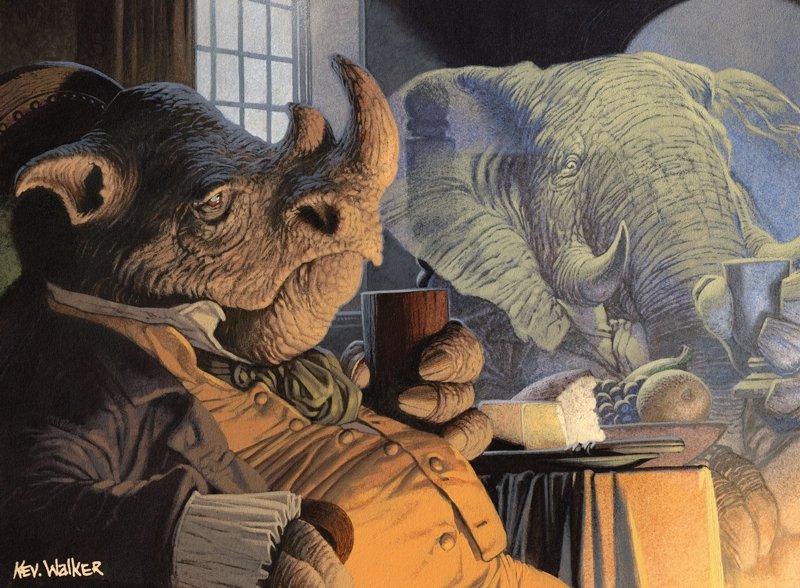
Late to Dinner by Kev Walker. Traditional.
I can’t tell you how many fond memories I have of eating dinner with artists while out and about at conventions and shows. Whether it’s a big group at IX at one of the regular restaurants, a small crew going to find tacos on the side streets of Reading, PA, or a one-on-one at a small Italian restaurant on the main street of Gettysburg, PA, I cherish these times and conversations.
Do we talk about art? Of course. But you talk about life, and goals, and things for the future and stories from the past, literally with people from all walks of life and all over the world. Next chance you get, ask an artist to join you at your table.
11. Write the way you talk, talk the way you think.
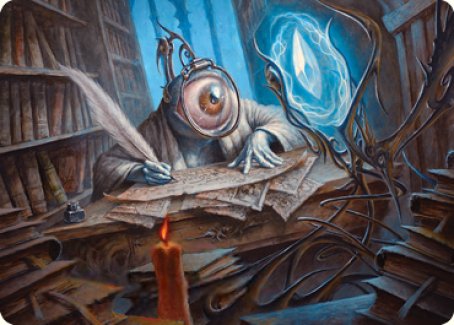
Unblinking Observer by Filip Burburan. Traditional.
This is something that art critic Jerry Saltz preaches, and I think it’s important enough to have it’s own rule amongst my twelve. The first part is something I keep very close as I’m writing. I want to write in a way that anyone can pull up one of my articles, understand what I’m trying to say, and be immersed in the artwork itself.
The second part is something to remember when out and about. You don’t need to try and use big words, or eloquent speech, or any of that in Artist Alley. Talk to an artist like you’re both people. If you love their work, don’t just tell them, but tell them why in a way that’s meaningful to you. It sparks conversation, and I promise you’ll find out something you didn’t know before.
Be unapologetically you when communicating, in whatever form you choose.
12. Share the love.
There is no greater support you can offer an artist than sharing their work. It can be as simple as a like, retweet, share, or comment on social media. It’s the message to a friend encouraging them to check out a piece of work you’ve just seen, or a complimentary nudge to a new artwork as it’s shown for the first time online. Like I mentioned before, send the artist a message, tell them you think something is awesome, and spread that wealth of feeling so that others may enjoy it too.
Wrapping Up
We’ve reached the end of my 12 rules, and I hope you found them both fun and fruitful. This was a fun way to begin the year looking back on some things I’ve learned, and also to outline things I want to keep in mind moving forward. I plan on being back out in the art world more than ever in 2022, at shows, conventions, and Magic events, and you can bet I’ll be abiding by as many of the things I’ve mentioned here. I’d love to hear if you have anything you’d add to the list, or perhaps something that rings true to you too.
I’ve still got one more free space in the article line-up before I start covering the upcoming overload of new art of Kamigawa: Neon Dynasty. Based on some of the early teasers we’ve seen, the artists on this set went HARD to reimagine this revisitiation 2000 years in the future.
As always, to see original #mtgart and other #vorthos related things, follow me on Twitter. Feel free to ask questions or retweet to continue the conversation. Thanks and see you next time!
Donny Caltrider has been playing Magic since 2002 and collecting original Magic art since 2017. He has an M.A. in Museum Studies from Johns Hopkins University and enjoys telling stories about art, objects, and the intersection of fantasy with real-life. You can find him on Twitter talking about #mtgart, museums, and other #vorthos related goodness. Follow along and continue the conversation!

